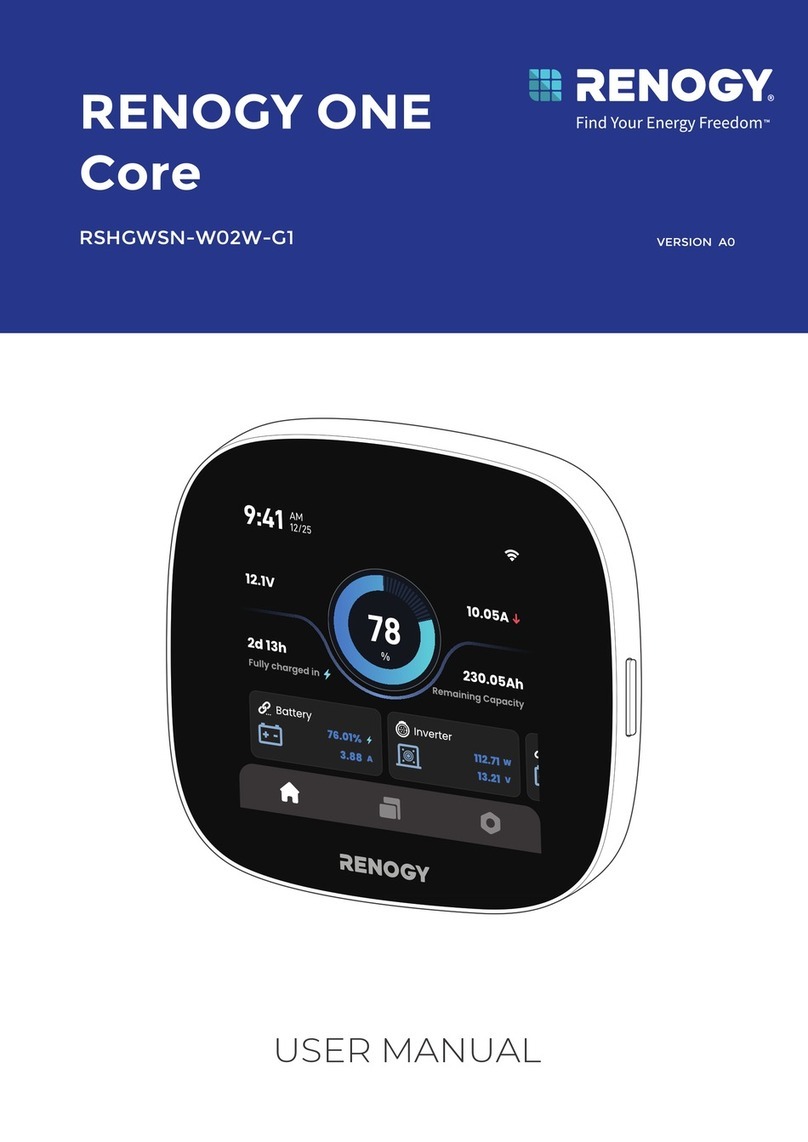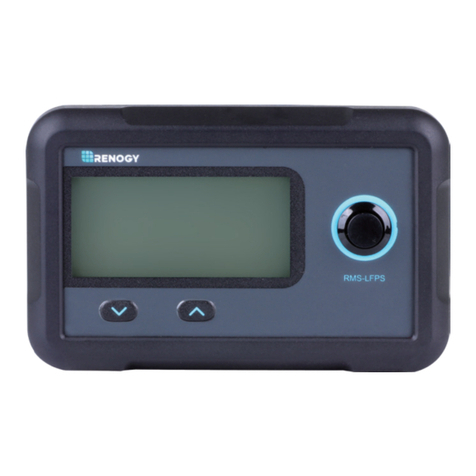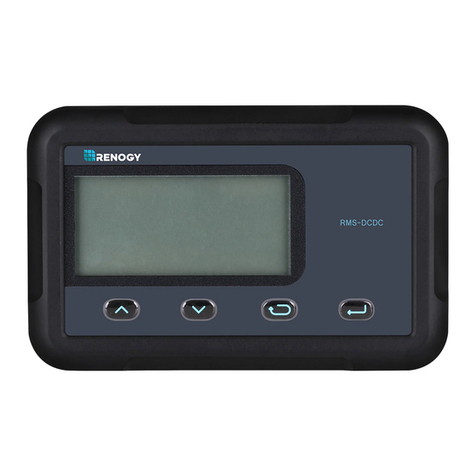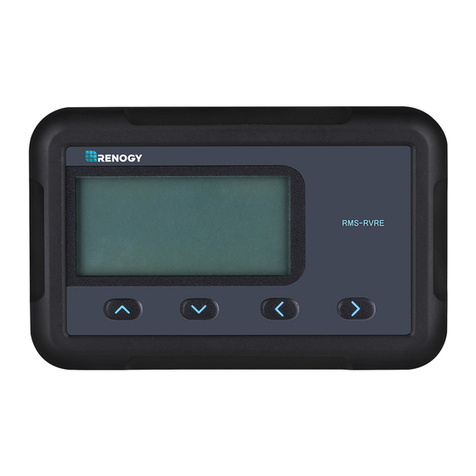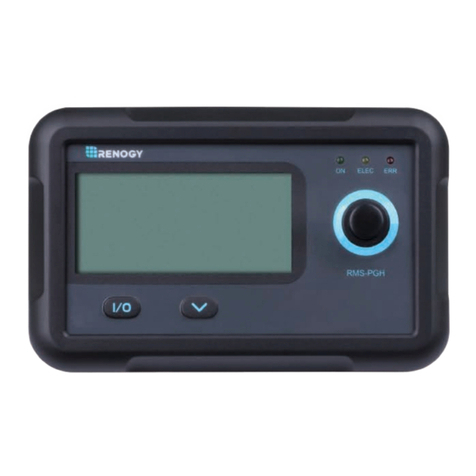3
General Information
The Renogy 150A High Precision Watt Meter and Power Analyzer is specifically designed for
monitoring solar performance. This easy to use meter can monitor eight electrical parameters that
are essentialto power safety and performance. Theyinclude: amps, volts, watts, amp-hours, watt-
hours, peak amps, minimum volts, and peak watts. With a 60 volt and 150A peak capacity, high
contrast blue display screen, and auto set features, you will surely find many great uses for this
watt meter and power analyzer.
Key Features
Backlit LCD display
Measures energy (Wh), charge (Ah), power (W), current (A), and voltage (V)
Rugged design—Handles 50A continuous and 150A peak at 60V.
Extremely low power consumption, practically ineffective to model’s performance
Precise and accurate readings
Lightweight with many installation possibilities
Features port connector for optional battery for measurement down to 0 volts
Bare wire ends to allow the user freedom for their own type of connections
Optional Component
Auxiliary Power Connector Cable
This cable allows the Renogy Watt Meter to connect to an optional
power source, such as a battery pack or a power supply. It has 3 bare
tinned leads for universal application. The main functionality allows
the users to measure down to 0 Volts. The cable is not required, but
very handy for many applications.
NOTE: Although the cable is an accessory to our product, it is not required. Also, Renogy
currently does not carry this accessory and users will need to find their own means on
attaining this cable.

